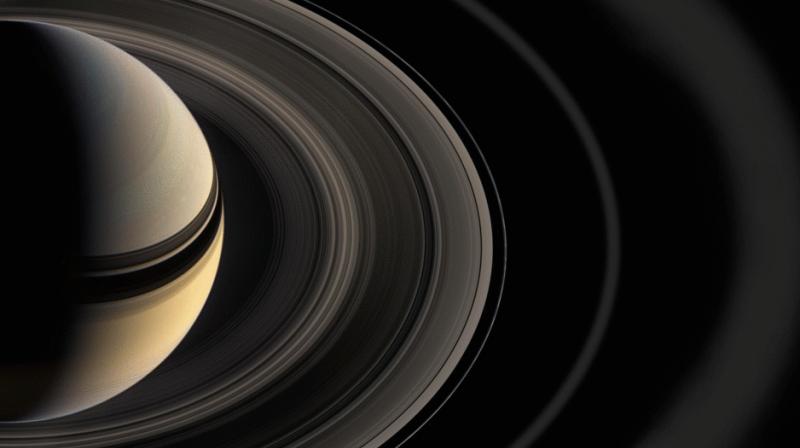Scientists create music from Saturn's moons, rings

Scientists have created music from the Saturn's moons and rings - converting their rhythmic orbits into musical octaves - to celebrate the Grand Finale of NASA's Cassini spacecraft next month.
The Cassini spacecraft has been collecting data while orbiting Saturn since its arrival in 2004 and is now in the throes of a final death spiral.
It will plunge into the planet itself on September 15 to avoid contaminating any of its moons.
After centuries of looking with awe and wonder at the beauty of Saturn and its rings, we can now listen to them, scientists at the University of Toronto in Canada said.
The conversion to music is made possible by orbital resonances, which occur when two objects execute different numbers of complete orbits in the same time, so that they keep returning to their initial configuration.
The rhythmic gravitational tugs between them keep them locked in a tight repeating pattern which can also be converted directly into musical harmony.
"To celebrate the Grand Finale of NASA's Cassini mission next month, we converted Saturn's moons and rings into two pieces of music," said Matt Russo, a postdoctoral researcher at the Canadian Institute for Theoretical Astrophysics (CITA).
"Wherever there is resonance there is music, and no other place in the solar system is more packed with resonances than Saturn," said Russo.
"Saturn's magnificent rings act like a sounding board that launches waves at locations that harmonise with the planet's many moons, and some pairs of moons are themselves locked in resonances," Dan Tamayo, a postdoctoral researcher at CITA.
The musical notes and rhythms both come from the orbital motion of Saturn's moons along with the orbits of the trillions of small particles that make up the ring system.
For the first piece which follows Cassini's final plunge, the researchers increased the natural orbital frequencies of Saturn's six large inner moons by 27 octaves to arrive at musical notes. "What you hear are the actual frequencies of the moons, shifted into the human hearing range" said Russo.
The team then used a state of the art numerical simulation of the moon system developed by Tamayo to play the resulting notes every time a moon completes an orbit.
Saturn's moon Titan actually gives the Cassini probe the final push which sends it hurtling towards its death in the heart of Saturn.
The music follows Cassini's final flight over the ring system by converting the constantly increasing orbital frequencies of the rings into a dramatic rising pitch; the volume of the tone increases and decreases along with the observed bright and dark bands of the rings.
The death of Cassini as it crashes into Saturn is heard as a final crash of a final piano chord, which was inspired by The Beatles' "A Day in the Life", in which a rich major chord follows a similarly tense crescendo.
In addition to the soundtrack, Russo has had a large wood carving made of Saturn's rings so people can follow along with their fingertips while listening.

